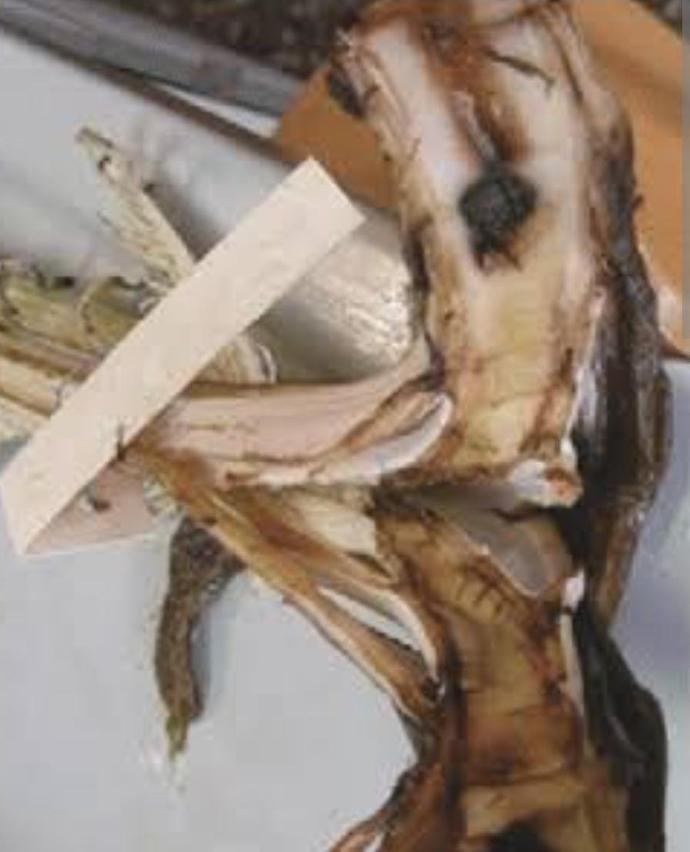Artichoke Plant
Artichokes are perennials, 36-60 inches tall, and frost-tolerant. They prefer well-drained, fertile soil in full sun. Keep the soil moist. Artichokes are edible and have medicinal properties.
Habit
Perennial
Height
1-2 m
Growth
Slow
Soil
Well-drained loamy soil
Shade
Full Sun
Moisture
Moist
Edible
Yes
Medicinal
Yes
Origin
Mediterranean
Climatic Condition
Mediterranean
Temperature (°)
15-25°C
Humidity (%)
60-70%
Potting media
Garden soil
Fertilizers
High in phosphorus
Watering
Regular watering; keep soil moist
Plant Weight
1-2 kg
Flowering Time
Spring
Soil Ph level
6.5 - 7.5
Water Ph level
6.0 - 7.0
Soil EC
Medium
Yield Per Plant
6-20 artichokes
NPK ratio
5:10:10
life Span
Perennial
Health Benefits
Rich in fiber and antioxidants; supports liver health.
Common Diseases and Remedies
Bacterial Crown Rot, Gray Mold (Botrytis Rot)
colonizing damaged artichoke leaves, the main concern with this fungus is when it gets on the flower bracts. plants with bacterial crown rot may be stunted.
Crop rotation, neem cake as soil amendment
HEALTH BENEFITS
1. Rich in Nutrients
- High in fiber, vitamin C, vitamin K, folate, and magnesium
- Low in calories but nutrient-dense
2. Supports Digestive Health
- Contains inulin, a prebiotic fiber that promotes gut health
- Aids digestion and prevents constipation
3. Promotes Heart Health
- Helps lower LDL (bad) cholesterol and increase HDL (good) cholesterol
- Rich in antioxidants that support cardiovascular health
4. Supports Liver Function
- Contains cynarin and silymarin, which help detoxify and protect the liver
- May improve bile production, aiding fat digestion
5. Helps Regulate Blood Sugar
- Fiber slows down sugar absorption, helping control blood sugar levels
- May benefit people with diabetes or insulin resistance
6. Packed with Antioxidants
- High levels of polyphenols and flavonoids combat oxidative stress
- May reduce the risk of chronic diseases like cancer
7. May Aid in Weight Loss
- Low in calories and high in fiber, which promotes satiety
- Helps regulate metabolism and digestion
8. Supports Brain Health
- Contains vitamin K, which is linked to brain function and reduced cognitive decline
- Antioxidants may help protect against neurodegenerative diseases
What Is An Artichoke Tree?
Artichoke is a perennial plant belonging to the Thistle family. They are grown for their edible buds and harvested before they bloom. Artichokes are native to the Mediterranean region and have been grown for thousands of years. Today it is grown in many parts of the world, including the United States, Italy, Spain and France. Artichokes are difficult crops because they require special cultivation and are susceptible to pests and diseases. But with proper care and attention they can be a good and delicious addition to any garden or farm. Artichoke is not a tree; They are perennial plants belonging to the Thistle family. The edible part of the artichoke plant is the flower, which is collected before it blooms. The plant itself has large, lobed leaves and can grow up to 6 feet tall. It is native to the Mediterranean region and is now grown in many parts of the world for its edible buds.
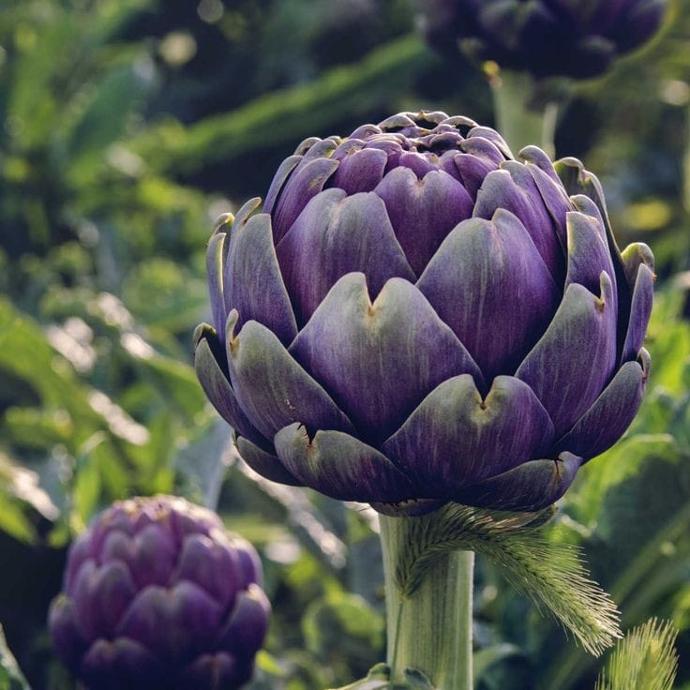
What Are The Different Types Of Artichoke Plants?
1. Artichoke (Cynara carunculus var. scolymus)
It is the most common type of artichoke and the one most found in markets. It has a large, round green bud with thick fleshy scales.
2. Violetta di Chioggia
It is a type of artichoke with purple or purple buds. It is famous for its tender meat and delicious taste.
3. Green Globe
This is another artichoke with green buds. It is known for its large size and mild scent.
4.Empire Star
It is a type of artichoke grown as an annual. It is known for its early ripening and high yield.
5. Jerusalem artichoke (Helianthus tuberosus)
This is another type of plant sometimes called “Jerusalem” or “Jerusalem.” It is not an artichoke, but it is related to the sunflower. The edible part of the Jerusalem artichoke is the tuber, which tastes similar to potatoes.
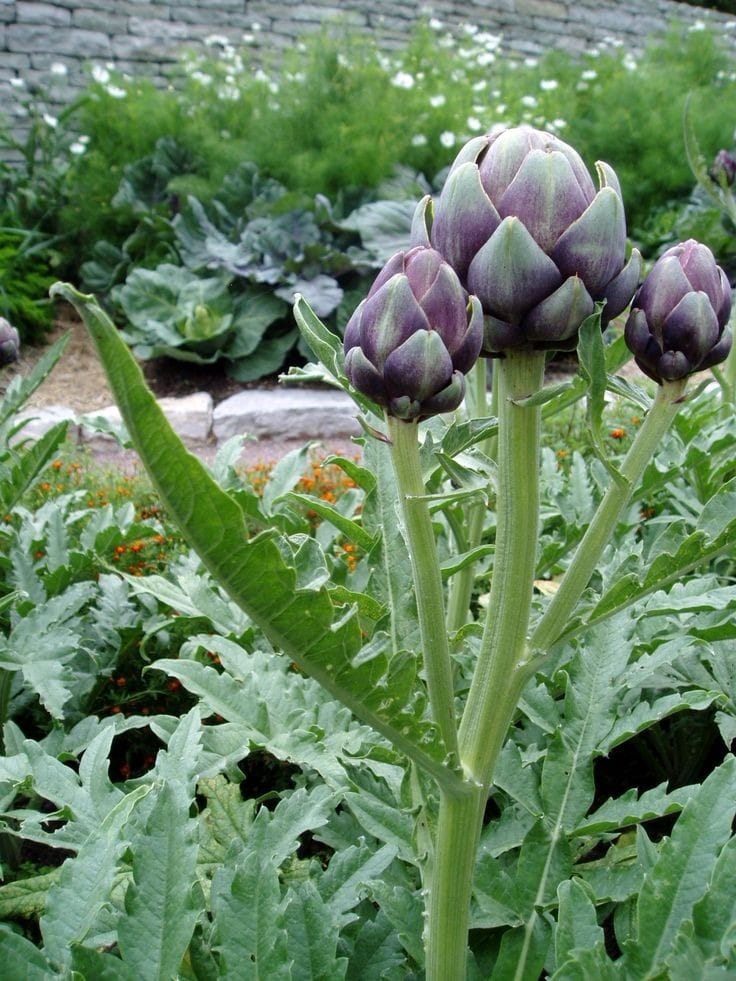
How to Care Artichoke Plants ?
1. Location
Artichoke plants require special environmental conditions to thrive. Artichoke thrives in the temperate Mediterranean climate. They love summer, humidity and mild winters. They can tolerate some frost, but prolonged cold weather can damage the plant. If you live in a cold climate, you can still grow artichokes, but you will need to provide some protection from the cold, such as covering the plant with a cloth or moving it into shelter for the winter. Artichokes need full sun to grow well. Choose a spot in your garden that receives at least 6-8 hours of direct sunlight each day. If you live in a particularly hot climate, some evening shade will help protect your plants from the heat.
2. Sunshine
Artichoke plants need sunlight to develop and produce good crops. This means they need at least 6-8 hours of direct sunlight per day. If you live in a particularly hot climate, some evening shade will help protect your plants from the heat. But generally speaking, artichokes prefer full sun and do not grow well in partial shade or part shade.
3. Soil
Artichoke plants prefer well-drained soil containing organic matter. They grow best in soil with a pH of 6.0-7.0. If your soil is very acidic, you can add lime to raise the pH. If your soil is heavy clay or tends to retain moisture, you should amend it with compost or other organic matter to improve drainage. Artichokes are heavy eaters and benefit from regular planting. Use a balanced fertilizer with a higher nitrogen content, such as a 10-10-10 or 20-20-20 formula, every 4-6 weeks during the growing season.
4. Hydration
Artichoke plants need to be watered regularly to keep the soil balanced. Water deeply once or twice a week, depending on weather and soil. Avoid overwatering as this can cause root rot. Watering the artichoke plant from the bottom rather than the top is also important to prevent fungal diseases. Additionally, mulch around the base of your plants can help retain moisture and regulate soil temperature. Use 2-3 inches of organic mulch such as straw or compost.
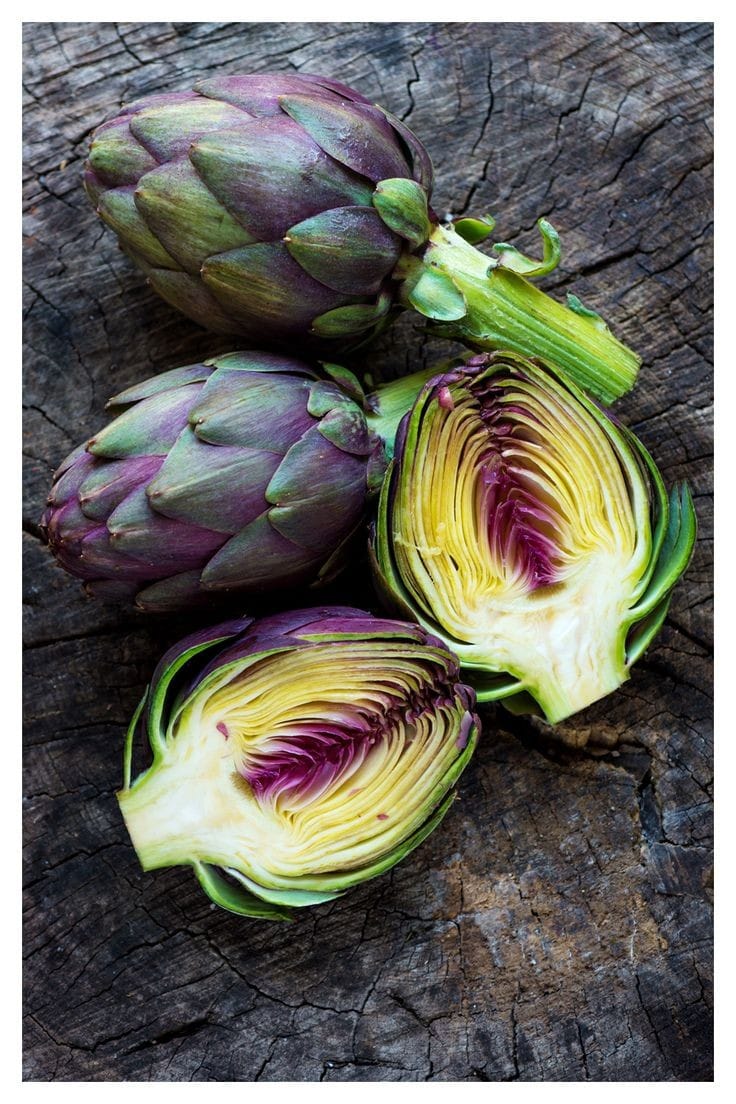
5. Nourishment
Artichoke plants are heavy feeders and benefit from regular planting. Use a balanced fertilizer with a higher nitrogen content, such as a 10-10-10 or 20-20-20 formula, every 4-6 weeks during the growing season. Apply the fertilizer according to the manufacturer's instructions and be sure to water well after application to help nutrients reach the roots. Additionally, artichokes like well-drained soils rich in organic matter. If your soil is very acidic, you can add lime to raise the pH. If your soil is heavy clay or tends to retain moisture, you should amend it with compost or other organic matter to improve drainage.
6. Issues
Growing artichokes can be difficult due to their unique requirements and susceptibility to pests and diseases. Some of the problems that may arise when growing artichoke plants include: Artichokes are sensitive to frost and can be damaged by freezing temperatures. If you live in a cold climate, you'll need to provide your plants with some protection from the cold, such as covering them with blankets or moving them to a shelter during the winter months. Also make sure your plants are in the right place so they can breathe well, and remove any dead or damaged leaves as needed to keep your plants healthy. If you notice signs of nutrient deficiency, such as yellow leaves or poor growth, consider applying a balanced fertilizer with a higher nitrogen content to help solve the problem. You can help your artichoke plant thrive and be productive by being aware of these potential problems and taking the necessary steps to prevent and solve them.
What are the Benefits of Artichoke ?
The artichoke plant has many advantages both as a useful food and as a garden plant: Artichoke is low in calories and fat and is a good source of fiber, vitamins and minerals. They are especially rich in antioxidants that help prevent oxidative stress and inflammation. Artichoke is known for its digestive benefits. They contain a substance called cynarin, which stimulates the liver to produce bile, improving digestion and liver function. Artichoke is good for the heart. They are rich in potassium, which helps lower blood pressure, and contain elements that help lower cholesterol. Artichoke has been used to treat liver diseases for centuries. They contain substances that help protect the liver from damage and support the detoxification process. Beautiful plants also emerge from artichoke plants. They have large, lobed leaves and produce red or green flower buds. They add interest to your garden and attract beneficial insects such as bees and butterflies.
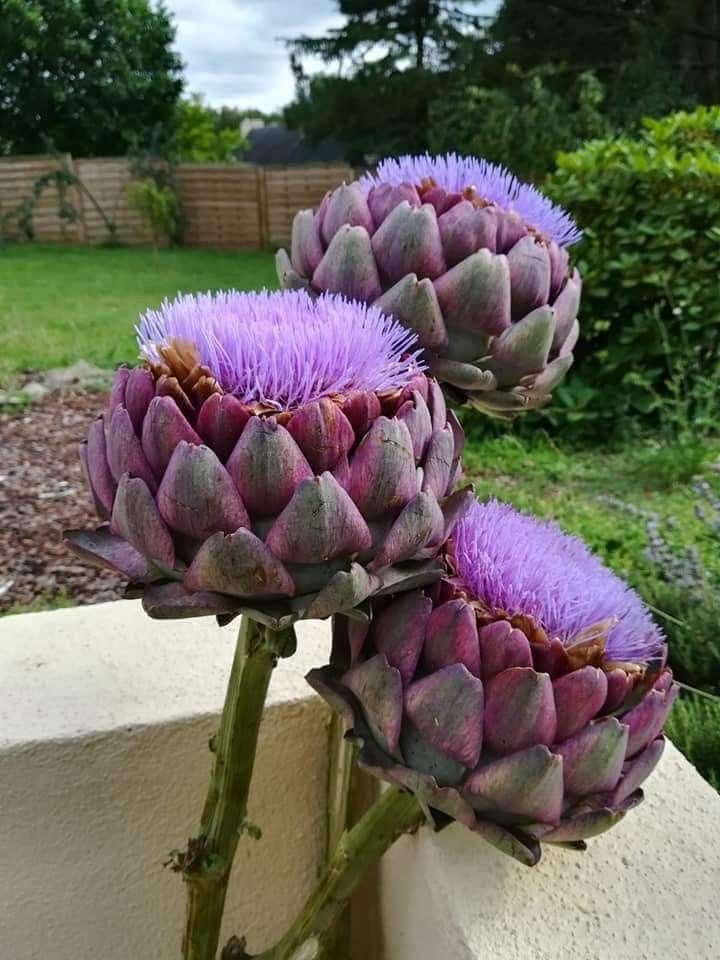
FAQs About Growing Artichoke
1. How to maintain artichoke plants ?
Artichokes need regular watering to keep the soil evenly moist. Water deeply once or twice a week, depending on the weather and soil conditions. Avoid overwatering, as this can lead to root rot. Mulching around the base of the plants can help conserve moisture, suppress weeds, and regulate soil temperature. Use a 2-3 inch layer of organic mulch, such as straw or compost. Remove any dead or damaged leaves as needed to keep the plant healthy. You can also remove any small side shoots that develop along the main stem to encourage larger bud development. Harvest artichokes when the buds are still tight and compact, before they start to open and bloom. Cut the buds from the plant with a sharp knife, leaving about an inch of stem attached. By following these guidelines, you can help ensure that your artichoke plants remain healthy and productive.
2. What are the uses of artichoke plants ?
The most well-known use of artichoke plants is for their edible flower buds. The buds are harvested before they bloom and can be eaten raw or cooked. They are often used in salads, dips, and other dishes. The leaves of artichoke plants are also edible and can be cooked and eaten. They are often used in Mediterranean cuisine, such as in stuffed artichokes or as a garnish. Artichokes have been used for centuries in traditional medicine to treat various ailments, including digestive issues and liver problems. They contain compounds that can help improve digestion, stimulate bile production, and protect the liver. Artichoke plants are also attractive garden plants. They have large, lobed leaves and produce striking purple or green flower buds. They can add visual interest to your garden and attract beneficial insects, such as bees and butterflies. Overall, artichoke plants are a versatile and beneficial addition to any garden or diet.
3. Can I grow artichoke plants indoor ?
Some artichoke varieties are better suited for indoor growing than others. Look for compact or dwarf varieties that are bred specifically for container growing. Artichoke plants have large, spreading roots and need plenty of room to grow. Use a large container with good drainage to accommodate the size of the plant. Artichokes prefer well-draining soil that is rich in organic matter. Use a high-quality potting mix that is specifically formulated for container gardening. Artichokes need regular watering to keep the soil evenly moist. Water deeply once or twice a week, depending on the weather and soil conditions. Artichokes are heavy feeders and benefit from regular fertilization. Use a balanced fertilizer with a higher nitrogen content, such as a 10-10-10 or 20-20-20 formula, every 4-6 weeks during the growing season. Artichoke plants can grow quite tall and may need support to prevent them from falling over. Use stakes or a trellis to support the plants as they grow. Remove any dead or damaged leaves as needed to keep the plant healthy. You can also remove any small side shoots that develop along the main stem to encourage larger bud development.
4. Which pot is best for growing artichoke plants ?
Artichoke plants have large, spreading roots and need plenty of room to grow. Choose a pot that is at least 18-24 inches in diameter and 18-24 inches deep to accommodate the size of the plant. Artichokes prefer well-draining soil, so choose a pot made of a porous material, such as terra cotta or ceramic. Avoid plastic pots, as they can retain too much moisture and lead to root rot. Make sure the pot has good drainage holes in the bottom to allow excess water to drain away. You can also add a layer of gravel or broken pottery to the bottom of the pot to improve drainage. Keep in mind that artichoke plants can be quite heavy, especially when they are fully grown and filled with soil. Choose a pot that is sturdy and stable, and consider placing it on a wheeled plant caddy to make it easier to move. Consider the aesthetic appeal of the pot, as it will be a prominent feature in your garden or on your patio. Choose a pot that complements the style and colour scheme of your outdoor space. By choosing a pot that provides enough space for the plant's roots to grow and has good drainage, you can help ensure that your artichoke plants thrive and produce a bountiful harvest.
5. From where can I shop artichoke plants ?
You can shop for artichoke plants at various places, depending on your preference and location. Here are some options: Local Nurseries and Garden Centres, Online Plant Retailers, Seed Catalogs, Local Farmers Markets, Local Garden Clubs and Plant Swaps. By exploring these options, you can find artichoke plants for sale and add them to your garden or landscape.
